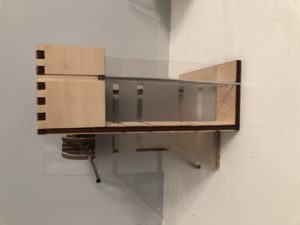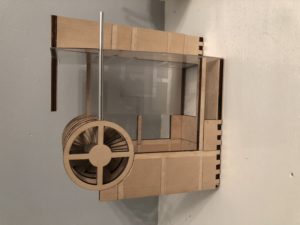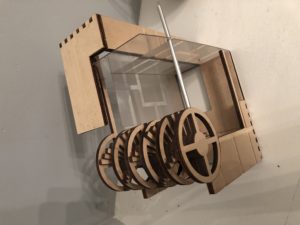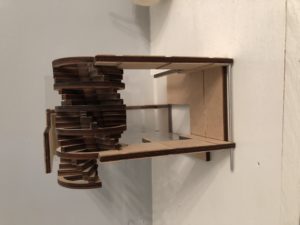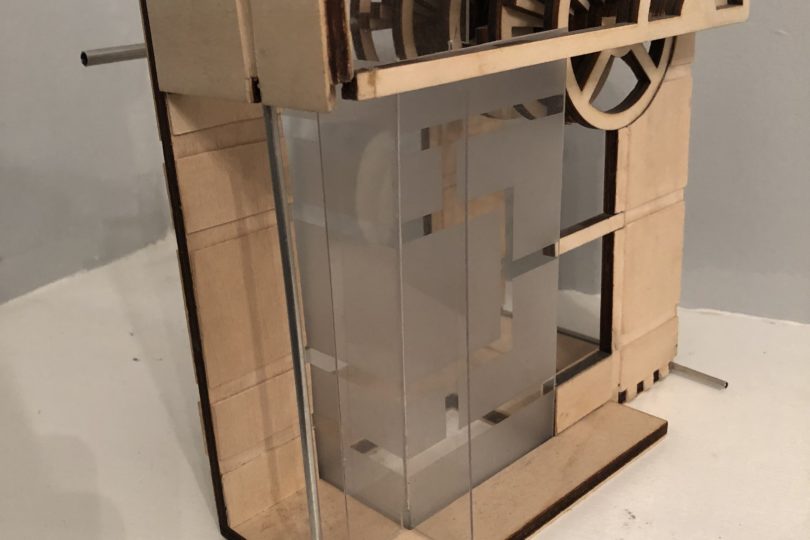The creative process for me when I create art is very loose and adaptable towards the beginning depending on the project I am starting so I am going to walk you through my process for creating a sculpture within given constraints. This is the final sculpture:
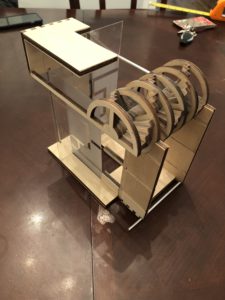
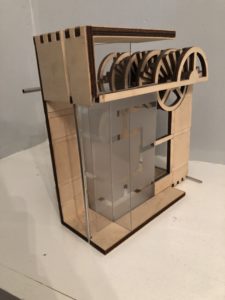
The constraints for this sculpture were that it needed to include these 7 pieces:
2 rectangular prisms with dimensions 4”x6”x8” and 3”x6”x8”
2 planes with dimensions 8”x5” and 6”x4”
2 lines of length 5” and 6” (the metal rods)
1 cylinder of length 5” and diameter 3”
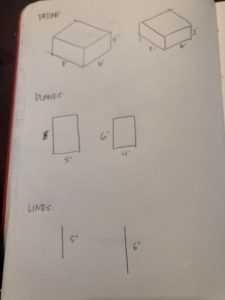
But those shapes could be arbitrary when you view the sculpture to someone who does not know the constraints, but to someone who knows, they should be able to identify the individual pieces. Also, all the faces of the two rectangular prisms did not have to be present, so I could remove certain pieces of it for artistic purposes. I could choose to represent each individual piece in whichever way I wanted to. And I had my choice of materials to represent each piece of the sculpture
And I had to figure out a way to assemble all those pieces together within a 8”x8”x5” invisible boundary so to speak, so the sculpture could not exceed the dimensions of that “invisible rectangular prism” in an artistic way.
The way my concept is determined is kind of like the activity we did in class where we were given an arbitrary geometric line and we had to draw something out of it. I will start randomly doodling whatever comes to mind and that usually turns into something else that I was not necessarily intending for it to. I believe that is a good way to begin for me because I get to put all my ideas onto paper in my sketchbook and then I will choose one to expand on. Then I will continue to add to it in small pieces until I have reached the point where I know what I want the final product to look like and then will begin to work on the final product.
My first step with this was to determine how to arrange all the pieces and how to overlap them to fit within the bounds. Also, which pieces of the prisms to remove so that you can see into the sculpture because I wanted the sculpture to feel open and not dense or crowded. So, I began sketching ideas for different layouts until I found one I liked, then I had determined how the pieces would be incorporated and how they would interact.
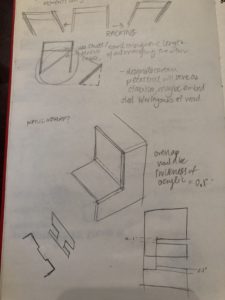
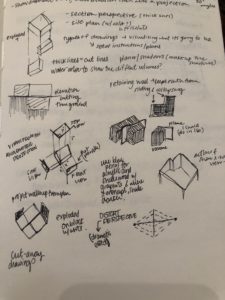
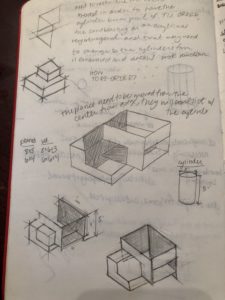
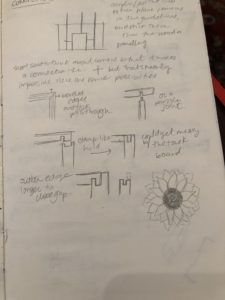
My second step was to determine how I could create relationships between the pieces to create flow and unity in the way they connected so all the individual pieces combined looked like one whole piece in harmony. So, I began thinking about how I could tie everything together in way that there were seamless transitions from where two pieces intersected or where one piece ended and where another began. I chose the planes to be made from acrylic sheets (clear pieces of plastic but thicker) and wanted to incorporate a pattern that would translate and continue all over the sculpture to create the flow I was looking for. I went back to my sketchbook and experimented with different geometric patterns of line that I could use a sandblaster to etch onto the acrylic (sandblasting acrylic turns it from transparent to opaque) and embed onto the surface of the prisms (which I chose to be constructed from wood). With the wooden prisms, I had to also decide how the planes of each side of the prisms would connect and interlock with one another to create a secure and strong connection.
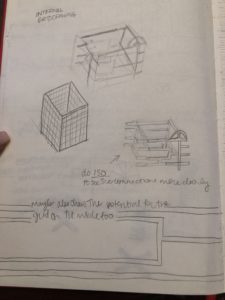
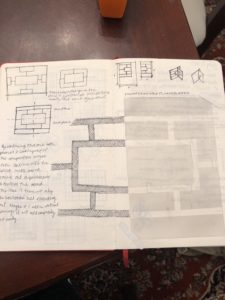
I settled on a design that I could extend onto all the pieces in a way that it would wrap around the entire sculpture and would connect in any way you looked at the sculpture. Then my next step was figuring out how I should incorporate the cylinder in the sculpture because at this point, I knew where I was placing it but all the other pieces and the design that I was putting on the entire surface of the sculpture were very linear and geometric with strong lines whereas the shape of a cylinder is round and curved. I needed to determine how to present the cylinder in a way that was also geometric and linear so it would match and work with the rest of the pieces. So again, I went back to my sketchbook and toyed with different ways to assemble the cylinder (which I was also constructing from wood). Then I settled on a cylinder that would be composed of several small pieces the shape of a cross, with two 3 inch lines that would intersect and then I would place them on top of one another, slightly rotating the crosses on top of one another so even though the smaller pieces had a geometric shape, offsetting them and stacking them would create a cylindrical shape. And the cross design that makes up the cylinder matches the linear design that is on the rest of the sculpture so that I could extend the pattern onto the cylinder and ensure that the flow carried out onto the cylinder unifying all the pieces.
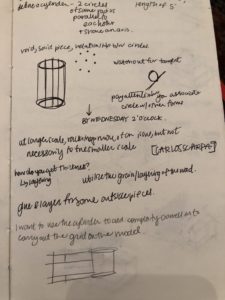
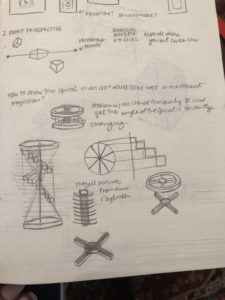
So, for me, my creative process is working piece by piece and iterating on smaller sections at a time for the sections to be incorporated together in the big picture. I have found that this also relates to the process for writing code in computer science. For example, given a project spec, we know from the start what the final product is supposed to be and how it is supposed to function but it is up to us as developers to design the class hierarchy and structure of the program so that each individual class and the methods and variable within it communicate with the others. As I learned the hard way, insufficient thought into design leads to poor design as well as problems and bugs within the functionality of the program. Our individual creative processes with programming that we have learned and develop on our own as we progress are crucial to our successes and failures in design. The flow of the program is key and the code and classes must be able to talk to one another and work together to produce a successful program. This begins with designing the smaller classes within the program and piecing together the smaller classes that make up your program’s code. If you consider the big picture and take into account how one small piece of the program is supposed to flow and work with another while designing the smaller pieces it will ensure the success of the entire design and project as well as creating cohesion and flow in an efficient manner that makes sense and works to deliver your final product.
